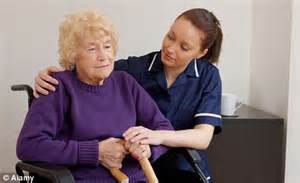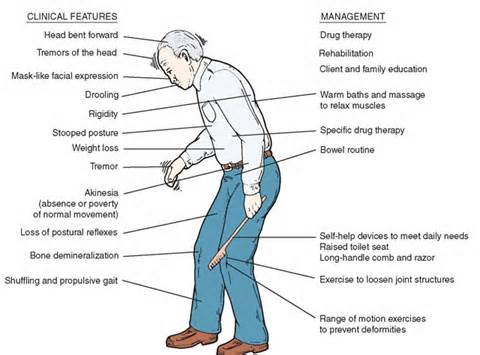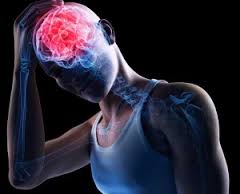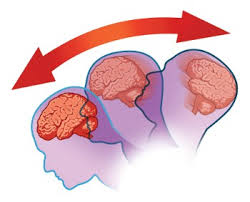Lesson 2: Cognitive Disorders
| Site: | MoodleHUB.ca 🍁 |
| Course: | Abnormal Psychology 35 RVS |
| Book: | Lesson 2: Cognitive Disorders |
| Printed by: | Guest user |
| Date: | Thursday, 30 October 2025, 1:14 AM |
Section/Lesson Objectives
The student will ...
• Understand and describe the general symptoms of the clinical disorders discussed in the course
• Discuss the possible causes of clinical disorders
• Understand and describe the general symptoms of the cognitive disorders discussed in the course [This lesson]
• Discuss the possible causes of cognitive disorders [This lesson]
• Understand and describe the general symptoms of mental retardation
• Discuss the possible causes of mental retardation
• Understand and describe the general symptoms of the personality disorders discussed in the course
• Discuss the possible causes of personality disorders
Introduction
Cognitive Disorders
The three main cognitive disorders discussed in this course are dementia, delirium, and amnesia. The main characteristic of this class of disorders is a significant impairment of memory or cognition (the act of knowing including awareness and judgment). The impairment is such that affected individuals have a considerable deterioration from their previous level of functioning.
Delirium
Delirium is characterized by a sudden onset of disorganization of higher mental processes. It is caused by a generalized disturbance in brain metabolism such that a person may have significant difficulty with basic cognitive processes. Such processes include perception, attention, memory, and thinking. Many individuals also experience sleep disruptions and psychomotor difficulties. Delirium is, in a relative sense, one step away from coma. Individuals suffering from delirium no longer have the ability to carry out purposeful mental activity of any kind. They have abnormal responses (either lethargy or agitation) to environmental stimuli, and they often experience hallucinations, misperceptions, and paranoia. Episodes of delirium rarely last more than a few days and may result from fever, head injuries, drugs, or oxygen deprivation to the brain. The most common causes of delirium are physical disease, brain injury, and drug abuse.
Please note that the following information on dementia, up to but not including the stages of dementia, has been reprinted from the Mayo Foundation for Medical Education.
Dementia
Dementia is a mental disorder that affects your ability to think, speak, reason, remember, and move. Many types of dementia exist. Some are progressive and permanent. That is, they get worse with time and cannot be cured. Other types can be treated and reversed.
A person with mild dementia may not realize he or she just asked the same question or may have trouble finding the right words to communicate. He or she may recognize faces but struggle to retrieve names. A person with mild dementia may also have trouble with more complex tasks, such as balancing a check-book. An individual with moderate dementia may struggle to name common objects or express needs and desires. He or she may be unable to learn new things and may become lost when away from home. As the dementia progresses, personality and behaviour changes become more noticeable. He or she may become silent and withdrawn, or verbally and physically aggressive. The person may not immediately recognize his or her grown children.
With more advanced dementia, the individual becomes confused and may have trouble operating routine equipment, such as the stove or a car. He or she may need help washing, dressing, eating, and using the toilet. As the dementia progresses, the person may have difficulty swallowing, walking, standing, or even sitting. Because many conditions can cause dementia, it’s important to consult a doctor so treatment, if available, can begin as early as possible.
Common Causes of Dementia
Many disorders can cause dementia. The three most common are Alzheimer’s disease, Lewy body dementia, and vascular dementia. These causes can overlap.
Alzheimer's Disease
 Alzheimer’s disease is the most common cause of dementia. Alzheimer’s disease involves a loss of nerve cells in the areas of the brain vital to memory and other mental functions. This loss is associated with the development of abnormal clumps and tangles of protein in the brain. These are known as amyloid plaques and neurofibrillary tangles. Individuals with Alzheimer’s disease also have lowered levels of brain chemicals that carry messages back and forth between nerve cells.
Alzheimer’s disease is the most common cause of dementia. Alzheimer’s disease involves a loss of nerve cells in the areas of the brain vital to memory and other mental functions. This loss is associated with the development of abnormal clumps and tangles of protein in the brain. These are known as amyloid plaques and neurofibrillary tangles. Individuals with Alzheimer’s disease also have lowered levels of brain chemicals that carry messages back and forth between nerve cells.
The first sign of Alzheimer’s disease is usually forgetfulness. As the disease progresses, language, reasoning, and understanding are affected. Eventually, a person with Alzheimer’s may become withdrawn, anxious, or aggressive. The precise cause of Alzheimer’s disease is unknown. Research indicates the disease usually results from a combination of factors including age and heredity. With respect to age, most people with Alzheimer’s disease are older than 65. The average age at diagnosis is 80. Alzheimer’s disease is uncommon in middle age and extremely rare in young adults. Regarding heredity, a family history of Alzheimer’s disease, especially in a first-degree relative, such as a parent or sibling, is associated with an increased risk of the disease. But even in families in which several people have had Alzheimer’s, most family members don’t develop it. While Alzheimer’s disease is irreversible, some medications may be able to slow its progression.
Video: What is Alzheimer's Disease?
Lewy Body Dementia
Lewy bodies are microscopic protein deposits found in deteriorating nerve cells. They often appear in areas deep within the brain and are associated with the tremor and rigidity of Parkinson’s disease. When widespread within the brain, Lewy bodies cause signs and symptoms similar to those of Alzheimer’s disease. Unlike Alzheimer’s, though, Lewy body dementia may affect speed of thinking, attention and concentration, and visual spatial abilities more severely than memory and language. It can also cause hallucinations and large fluctuations in degree of alertness. Although there is no cure for Lewy body dementia, some people do receive some benefit from the same drugs used to treat Alzheimer’s disease.
Vascular Dementia
This type of dementia results either from extensive narrowing and blockage of the arteries that supply blood to the brain or from strokes caused by an interruption of blood flow to the brain. The initial onset of symptoms usually is abrupt, but sometimes the disease progresses slowly, making it difficult to distinguish it from Alzheimer’s disease. It’s common for vascular dementia to cause problems with thinking, language, walking, bladder control and vision. Preventing additional strokes by treating underlying diseases, such as high blood pressure, may halt the progression of vascular dementia.
Other Causes
Other diseases that directly affect brain cells and that may result in progressive dementia include:
- Parkinson’s disease. People with Parkinson’s disease may experience stiffness of limbs, shaking at rest (tremor), speech impairment and a shuffling gait. Some people with Parkinson’s develop dementia late in the disease. This type of dementia begins with a slowing of the thought processes and difficulty concentrating and eventually progresses to confusion.

- Huntington’s disease. This disease stems from an inherited disorder that causes certain nerve cells within the brain to waste away. As the disorder progresses, a person with Huntington’s develops personality changes and a decline in intellect, memory, speech and judgment. Dementia commonly develops in the later stages of the disease.
Video: What is Huntington`s Disease?
- Creutzfeldt-Jakob disease. This rare and fatal brain disorder can occur in young or middle-aged people. Creutzfeldt-Jakob disease is thought to be the result of prions, infectious agents that can transform normal protein molecules into transmissible, deadly ones. The earliest signs and symptoms of the disease are usually memory impairment and behavioural changes. The disease usually progresses rapidly with mental deterioration, muscle jerking (involuntary movements), weakness in the arms or legs, blindness and eventually coma.
Video: Creutzfeldt-Jakob Disease
- Frontotemporal dementia. This uncommon brain disorder is characterized by disturbances in behaviour and personality, and eventually memory loss. It is relentless in its progression and may ultimately lead to language impairment, erratic behaviour and dementia. Pick’s disease is one form of frontotemporal dementia.
Although the symptoms of dementia caused by these illnesses are sometimes improved with treatment, the underlying dementia cannot be cured. For other medical conditions that cause dementia, some degree of recovery is possible and some treatments may even lead to a cure. These conditions include hydrocephalus, brain tumours, and infections of the brain including encephalitis, meningitis, HIV/AIDS and syphilis.
In addition, appropriate treatment may reverse dementia caused by disorders of the thyroid, kidney, liver and pancreas. Dementia caused by a shortage of oxygen (due to lung disease), the overuse or abuse of medications (especially sleeping pills, tranquilizers and antidepressants), a deficiency in vitamins (such as B-12), and drug abuse may also be reversed.
Stages of Dementia
The following table depicts five general stages of dementia. Please not the progressive severity of symptoms.
Table 2.1: Stages of Dementia
|
Stage
|
Symptoms
|
|
Mild cognitive impairment
|
Individuals in this stage have some difficulty with memory, but they are able to live alone and function independently. |
|
Mild dementia
|
In this stage, people have impaired thinking and memory. They often require assistance with finances, personal hygiene, and cooking. They may become disoriented in public places. |
|
Moderate dementia
|
In this stage, people have significant deterioration of memory. They also have difficulty communicating and require assistance with performing most tasks. They cannot live alone and cannot venture out in public without support. |
|
Severe dementia
|
Individuals in this stage need constant care. They often soil themselves and cannot effectively communicate with others. They are unable to function in public without significant assistance. |
|
Profound dementia
|
At this stage, individuals are often bedridden. |
The following content on amnesia (up to, but not including Case Study 18) has been reprinted with permission from HowStuffWorks, Inc., 2002,
http://www.howstuffworks.com.
What Exactly is Amnesia?
A popular subject on the “big screen” and “television” (especially the daytime variety) is a form of memory loss known as amnesia. Stedman’s Medical Dictionary defines amnesia as “a disturbance in the memory of information stored in long-term memory, in contrast to short-term memory, manifested by total or partial inability to recall past experiences.” Amnesia is a condition in which someone can’t recall stored memories, like their mom’s maiden name or what happened last Christmas, but they may recall the knock-knock joke their little brother told them a few seconds ago. This is actually an example of retrograde amnesia.
To understand how the loss of memory works, it’s good to know how we store memories in the first place. The human brain is a truly amazing organ. It gives us the power to think, plan, speak, and imagine. It also gives us the ability to make and store memories. Physiologically speaking, a memory is the result of chemical or even structural changes in synaptic transmissions between neurons. As these changes occur, a pathway is created. This pathway is called a memory trace. Signals can travel along these memory traces through the brain.
There are several different types of amnesia, and they can be caused by such things as disease or head trauma. Sometimes the memory loss associated with amnesia includes everything from a person’s past, and other times just bits and pieces are missing. In most cases, amnesia is a temporary condition and is very brief, lasting from a few seconds to a few hours. However, the duration can be longer depending on the severity of the disease or trauma, possibly lasting for a few weeks or even months.

Memory
| Short-term memory - This refers to memories that last anywhere from a few seconds to a couple of minutes. Intermediate long-term memory - This refers to memories that may last for days or even weeks, but eventually are lost forever (unless they are moved to long-term memory). Long-term memory - This refers to memories that can be recalled for many years (perhaps for an entire lifetime). |
As the amnesiac recovers, he or she usually recalls older memories first, and then more recent memories, until almost all memory is recovered. Memories of events that occurred around the time of the accident or onset of amnesia are sometimes never recovered. The two most commonly discussed forms of amnesia are retrograde amnesia and anterograde amnesia. If someone is suffering from retrograde amnesia, he or she cannot recall memories that occurred before the onset of amnesia. If someone has anterograde amnesia, he or she cannot remember incidents that happen after the onset of amnesia.
Making and storing memories is a complex process involving many regions of the  brain, including the frontal, temporal and parietal lobes. Damage or disease in these areas can result in varying degrees of memory loss. Here’s a good example of how this works: In order for short-term memory to become long-term memory, it must go through a process known as consolidation. During consolidation, short-term memory is repeatedly activated -- so much so that certain chemical and physical changes occur in the brain, permanently “embedding” the memory for long-term access. If, during this repeated activation, something interrupts the process -- let’s say a concussion or other brain trauma -- then short-term memory cannot be consolidated. Memories can’t be “stored” for long-term access. This may be what’s going on in anterograde amnesia. In the image on the right, you can see how the brain is damaged in a concussion as the force against the head causes the brain to hit the front and then the back of the scull. The collision of the brain with the skull causes damage.
brain, including the frontal, temporal and parietal lobes. Damage or disease in these areas can result in varying degrees of memory loss. Here’s a good example of how this works: In order for short-term memory to become long-term memory, it must go through a process known as consolidation. During consolidation, short-term memory is repeatedly activated -- so much so that certain chemical and physical changes occur in the brain, permanently “embedding” the memory for long-term access. If, during this repeated activation, something interrupts the process -- let’s say a concussion or other brain trauma -- then short-term memory cannot be consolidated. Memories can’t be “stored” for long-term access. This may be what’s going on in anterograde amnesia. In the image on the right, you can see how the brain is damaged in a concussion as the force against the head causes the brain to hit the front and then the back of the scull. The collision of the brain with the skull causes damage.
It is believed that consolidation takes place in the hippocampi, located in the temporal lobe regions of the brain. Medical research indicates that it is the frontal and temporal lobes that are most often damaged during head injury. This is why many people who suffer severe head trauma or brain injury experience anterograde amnesia. If the hippocampi are damaged, the amnesiac will be able to recall older memories, but won’t be able to make any new ones.
Types of Amnesia
|
Anterograde amnesia - Inability to remember ongoing events after the incidence of trauma or the onset of the disease that caused the amnesia. |
Case Study: Amnesia
|
Description Evan, an 18 year-old male, was brought to a hospital for psychiatric consultation. The US Coast Guard had found him adrift in a sailboat off the coast of Florida, and the local police had taken him to the hospital. Despite having been overexposed to the sun and being exhausted, Evan was physically fine. He showed no evidence of head injury or dehydration. His psychological health, however, was poor. When asked what day it was, Evan gave the wrong date, he was incorrect by five days. He also found difficulty concentrating on specific questions. He was, however, able to tell the physician that he had gone sailing off the coast of Florida with some friends and they had encountered bad weather. Because of his confusion (he had to be reminded that he was in a hospital) and his exhaustion, Evan was permitted to sleep for six hours. Upon awakening he was more alert, but he was still unable to account for his companions. In fact, he had no recollection of what happened after the bad weather fell upon the group. He did, however, remember the conversation he had with the physician upon arrival at the hospital. He was also able to recall that he was a student at a local college, that he had a group of close friends, and that he had a caring family. In addition, it was learned that Evan did not abuse alcohol or other drugs, and that he had no history of previous mental illness. |
Evan then underwent a “lie-detector test.” During his interview he admitted that neither he nor his friends were experienced sailors and that no one in the group was capable of dealing with the storm they encountered. Unlike his friends, Evan had attached himself to the boat with a life jacket and tie line. He believed that it was a combination of luck and the tie line that saved him from being swept into the sea like his friends. Evan had survived on a small supply of food for the next three days – up to the time he was rescued by the Coast Guard. Diagnosis Evan had acute memory loss. He did not display signs of head trauma, cerebrovascular accident, drug use, dementia, or delirium. Because of this and the fact that the amnesic period developed after a traumatic experience, the diagnosis of psychogenic amnesia is made. Evan’s DSM diagnosis for Axis I is psychogenic amnesia. |
Lesson Review
In this lesson you learned about the three cognitive disorders which include: dementia, delirium, and amnesia.
|
To summarize:
|
